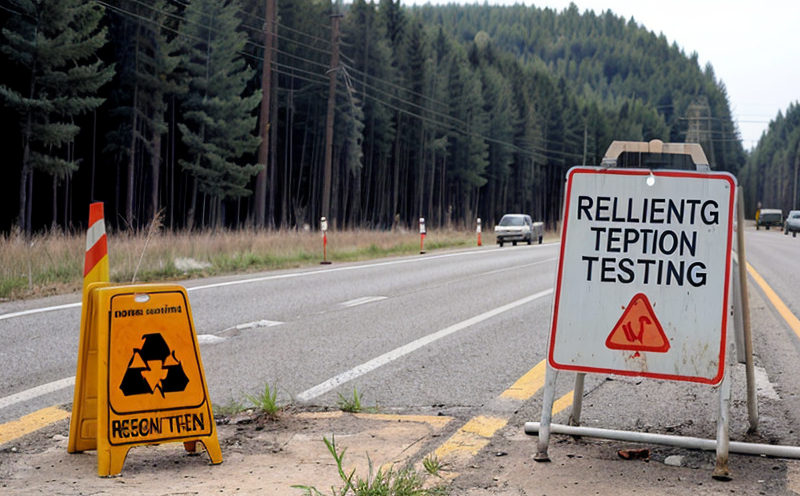ISO 18589-5 Radiochemical Determination of Plutonium
The ISO 18589 series provides a standardized approach to the radiochemical determination of plutonium, specifically addressing the analysis and quantification of plutonium isotopes in various matrices. This service ensures precise measurement for environmental, industrial, and safety applications, particularly relevant in sectors dealing with nuclear materials and waste management.
The ISO 18589-5 method is widely recognized for its reliability and accuracy across a range of conditions and specimen types. It covers the extraction, purification, and quantification steps necessary to determine plutonium isotopes through radiochemical analysis. This service plays a crucial role in compliance with international standards, ensuring that organizations meet stringent regulatory requirements related to nuclear materials.
The process begins with the selection and preparation of the sample, which may include soil, water, or solid waste containing traces of plutonium. The specimen is then subjected to rigorous extraction techniques designed to separate plutonium from other elements in the matrix. Purification steps are critical to eliminate interference and ensure accurate readings.
The radiochemical method involves the use of specific reagents that react selectively with plutonium isotopes, allowing for their identification and quantification using sensitive instrumentation such as gamma spectrometry or liquid scintillation counting (LSC). The precision of these instruments is paramount in achieving results that comply with international standards.
The service includes thorough documentation and reporting of all procedural steps, ensuring transparency and traceability. This detailed record-keeping supports the reliability of the test results and facilitates easy verification by regulatory bodies or other stakeholders.
By adhering to ISO 18589-5, laboratories ensure that their testing processes are consistent with global best practices, enhancing confidence in the accuracy and validity of the results. This is particularly important for organizations involved in nuclear waste management, environmental monitoring, and research into plutonium isotopes.
The implementation of this service not only meets regulatory requirements but also contributes to safer handling and disposal of plutonium-containing materials. It supports the responsible stewardship of nuclear resources by providing accurate data that can inform decisions on safety protocols, risk assessment, and long-term management strategies.
Why It Matters
The significance of ISO 18589-5 lies in its ability to provide a robust framework for the radiochemical determination of plutonium. This method is essential for ensuring that organizations involved with nuclear materials can meet stringent regulatory requirements. Regulatory compliance is critical in sectors dealing with nuclear waste, environmental protection, and public health.
The accurate quantification of plutonium isotopes is vital for several reasons:
- Regulatory Compliance: Meeting international standards such as ISO ensures that organizations are adhering to the highest quality control measures.
- Safety and Security: Precise measurements help in identifying potential risks associated with nuclear materials, ensuring safer handling and disposal practices.
- Data Reliability: Consistent results across different laboratories enhance the credibility of the findings, which is essential for research and development activities.
The service also supports environmental monitoring efforts by providing accurate data on plutonium levels in soil, water, and air. This information is crucial for understanding the impact of nuclear activities on the environment and informing mitigation strategies.
Additionally, ISO 18589-5 plays a key role in supporting research into new technologies and methods for handling and processing plutonium. By providing reliable data, this service enables scientists to develop safer and more efficient processes.
Benefits
The benefits of ISO 18589-5 are manifold, offering significant advantages to organizations involved in nuclear materials management:
- Regulatory Compliance: Adherence to international standards ensures compliance with local and international regulations.
- Safety Assurance: Precise measurements enhance the safety of personnel and the environment by identifying potential hazards early.
- Data Accuracy: Reliable results provide accurate data for decision-making, supporting informed choices in risk assessment and management.
- Research Support: The method supports advancements in nuclear technology and waste management through reliable quantification of plutonium isotopes.
The ISO 18589-5 service also provides a platform for collaboration among laboratories, ensuring consistency and reliability across different testing facilities. This is particularly important given the global nature of many nuclear programs and waste management initiatives.
By leveraging this standardized approach, organizations can build trust with stakeholders by demonstrating their commitment to high-quality, accurate testing. The service enhances the reputation of participating entities as leaders in nuclear safety and environmental stewardship.
Competitive Advantage and Market Impact
The ISO 18589-5 radiochemical determination of plutonium offers significant competitive advantages to organizations operating in sectors related to nuclear materials:
- Reputation Enhancement: Compliance with international standards enhances the reputation of laboratories as reliable and trustworthy partners.
- Credibility Boost: Accurate, consistent results increase the credibility of testing services, which is crucial for gaining competitive edge.
- Innovation Support: The method supports research and development efforts by providing accurate data that can inform new technologies and processes.
The service also contributes to market differentiation by offering a benchmark against which other laboratories can measure their performance. This ensures that organizations remain at the forefront of nuclear safety and environmental protection.
In addition, ISO 18589-5 supports strategic partnerships with regulatory bodies and international organizations, further enhancing an organization's standing in the global market. By participating in this service, entities demonstrate a commitment to excellence and a proactive approach to risk management.





